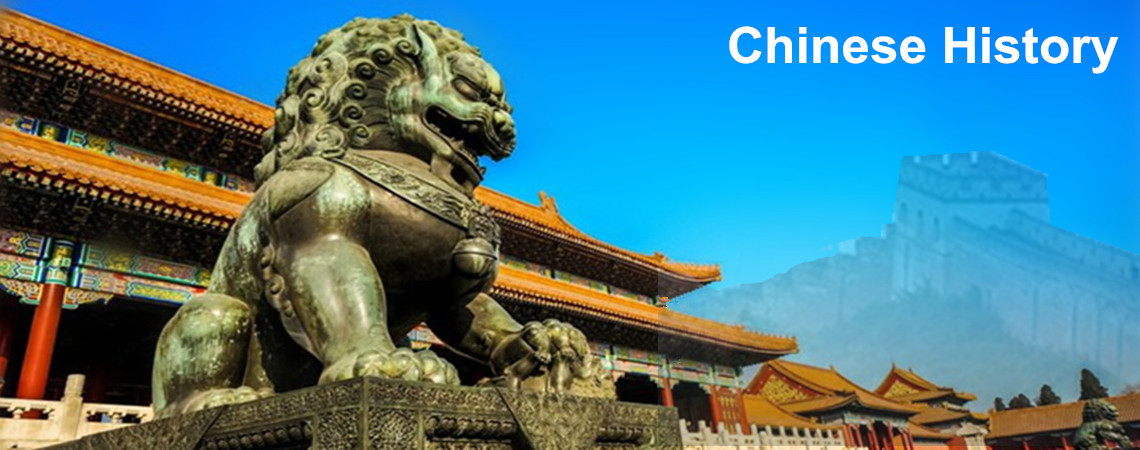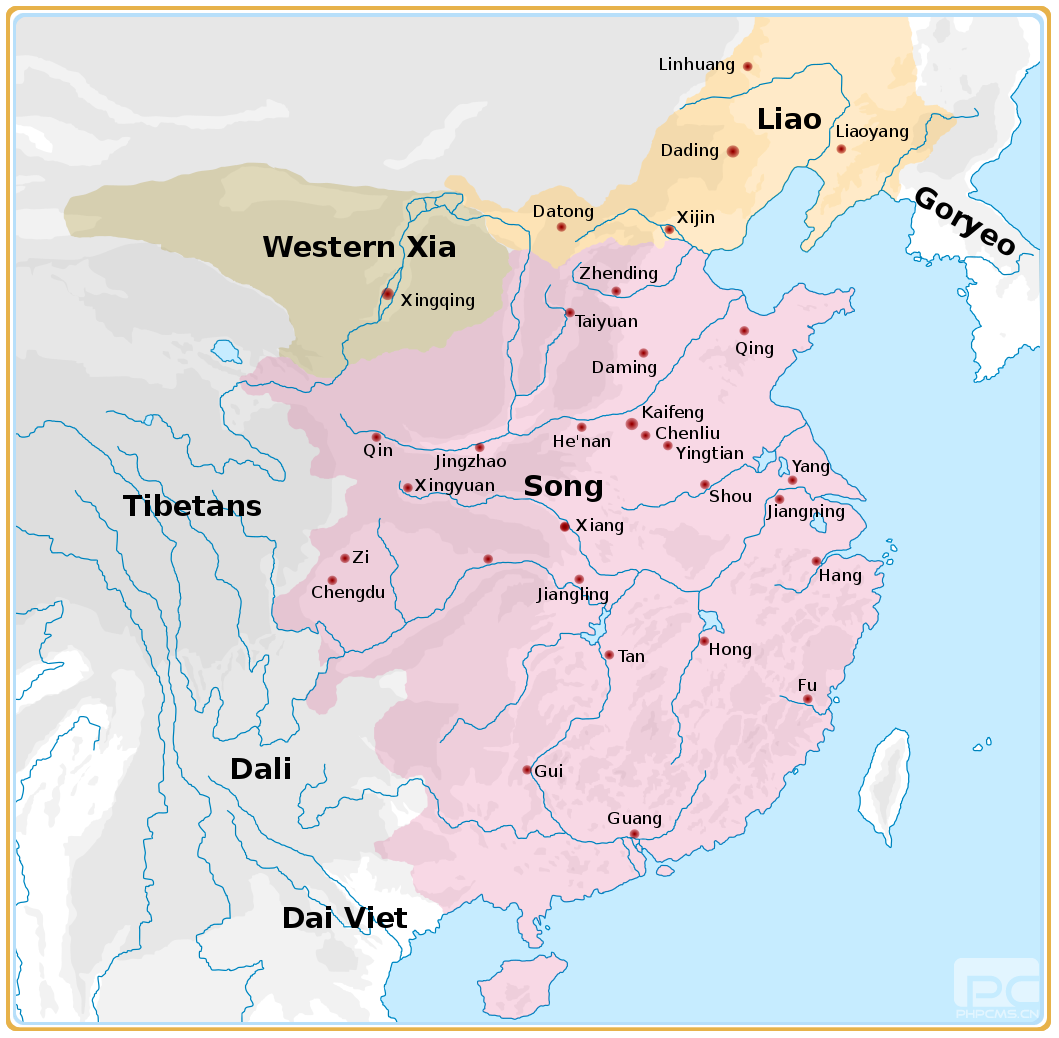
Song Dynasty (960-1279)
 Song Dynasty was Preceded by the fractured Five Dynasties and Ten Kingdoms Period (906–960) and succeeded by the Mongol-led Yuan Dynasty (1279–1368). With a prosperous economy and radiant culture, this period of Song Dynasty was considered as another period of 'golden age' after the glorious Tang Dynasty (618 - 907). It coexisted with the Liao Dynasty (907–1125) in the northeast and the Western Xia Dynasty (1038–1227) in the northwest. When the second Jin Dynasty (1115–1234) supplanted the Liao, they drove the Song south, dividing the dynasty into the Northern Song (960–1127) and the Southern Song (1127–1279) eras.
Song Dynasty was Preceded by the fractured Five Dynasties and Ten Kingdoms Period (906–960) and succeeded by the Mongol-led Yuan Dynasty (1279–1368). With a prosperous economy and radiant culture, this period of Song Dynasty was considered as another period of 'golden age' after the glorious Tang Dynasty (618 - 907). It coexisted with the Liao Dynasty (907–1125) in the northeast and the Western Xia Dynasty (1038–1227) in the northwest. When the second Jin Dynasty (1115–1234) supplanted the Liao, they drove the Song south, dividing the dynasty into the Northern Song (960–1127) and the Southern Song (1127–1279) eras. Facts of the Song Dynasty
Time: 960-1279
Capital: Kai Feng (Northern Song) , Hangzhou ( Southern Song)
Emperors:
Replaced by: Yuan Dynasty
The Northern Song was founded by Zhao Kuangyin, a military general in the Latter Zhou (951 - 960). In 960, Zhao Kuangyin launched a mutiny in Chenqiao county (in current Henan Province).It was not long before the last king of the Latter Zhou was forced to abdicate. Thus a new dynasty - Song was established in Kaifeng. In that period, most part of China's territory was unified. However, in late Northern Song, the political corruption was serious and the regime began to decline. In 1127, it was destroyed by the Jin (1115 - 1234).
Southern Song Dynasty (1127-1279)
The Southern Song was set up by Zhao Gou, son of the last emperor of Northern Song. After Jin defeated the Northern Song, many imperial clansmen were captured by Jin's army. Fortunately, Zhao Gou had a luck escape. In 1127, he fled to Nanjing Yingtianfu (in current Shangqiu of Henan Province) and established the Southern Song Dynasty there. Later, the capital city was moved to Lin'an (currently Hangzhou City in Zhejiang Province).The Southern Song's regime was subject to the Jin. Many patriotic generals were killed in the late period. In 1279, the army of the Yuan Dynasty captured Lin'an, putting the Southern Song to an end.
Development in the Song Dynasty
Generally, the Song Dynasty was prosperous in many respects of the society. In agriculture, the productive technology was improved which promoted the output of food; in handicraft industry, the division of labor became more detailed which made the handicrafts technology reach an advanced level; additionally, the development of the commodity economy exceeded the previous level. Particularly, the earliest paper currency appeared at that period.
As for the development of science and culture, tremendous achievements were made during this period. Two of China's four great inventions - typography and compass were both invented and the application of gunpowder also developed rapidly. With regard to literature, a large number of outstanding scholars and poets, such as Zhuxi, Ouyang Xiu, Su Shi, Sima Guang and Shen Kuo, emerged and built up the splendid cultural atmosphere of the Song Dynasty.






 Ask Questions ?
Ask Questions ?